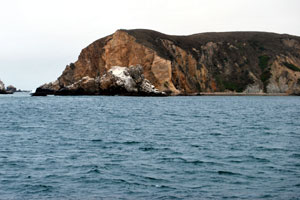California's Marine Life Protection Act planning process is mammoth. When it's all said and done, it will have spanned more than a decade, involving dozens of public meetings and hundreds of stakeholders. The result will be one of the most robust conservation networks in the world, stretching across 1,100 miles of coastline.
Right now, two regions of the California coast have marine protected areas (MPAs) in place - the Central Coast and the North Central Coast, which spans from Mendocino to the top of Santa Barbara County. "Marine protected area" is catch-all phrase for the different kinds of reserves that are set up in this process. Some are strictly "no-take" zones where fishing isn't allowed. Others are recreational areas where fishing is limited. In all, about 350 square miles have been protected, or about 18% of the state waters in these study areas. (Here's a QUEST TV story we did just after the first MPAs were created). The two remaining sections of the coast are at the very northern and southern ends of the state. Each has its own challenges (check out this California Report story about the north coast region for more on that.)
The first group of MPAs went into effect three years ago, but in May, 21 new MPAs went into effect off the coast of San Francisco. As part of this story, I spoke with the game wardens at the California Department of Fish and Game. They're on the frontlines of patrolling and enforcing these new reserves. The California budget crisis has certainly had a impact on the department. California has the lowest number of wardens per capita in the nation. The ones patrolling the MPAs are responsible for both other coastal regulations and several counties inland. However, public-private partnerships are playing a big role. Foundations and non-profits stepping in to help out and fund some of the monitoring activities.
One of the big questions yet to be answered is whether the MPAs are having in impact on the marine life they're designed to protect. Mark Carr, a UC Santa Cruz professor, said it will be a few more years before their surveys show results. Unlike some tropical marine ecosystems, the ones off the California coast are slow-growing. If they are successful, Carr says the results could be seen both in and outside the MPAs. The goal is to see bigger fish and more fish all over the coast.

